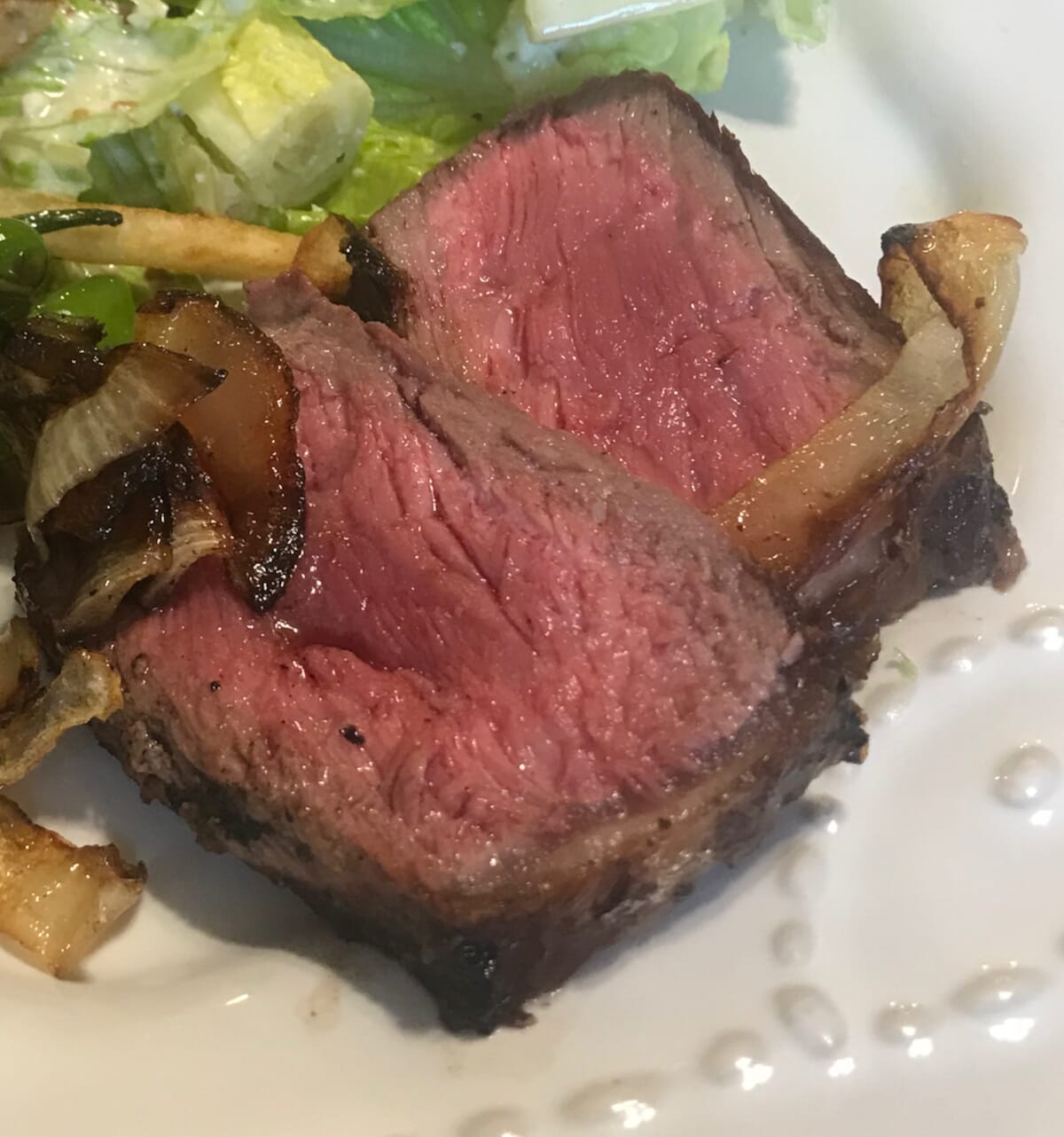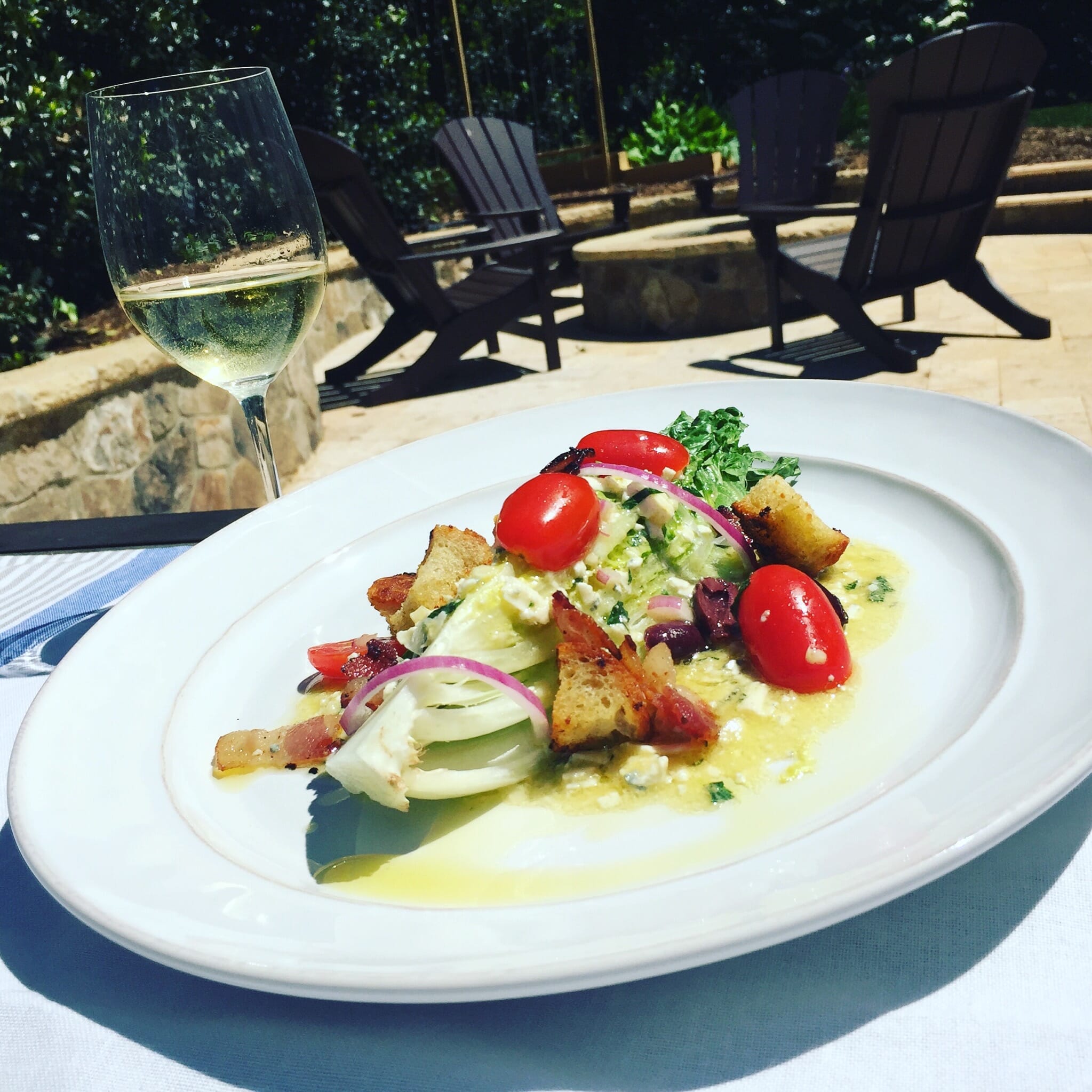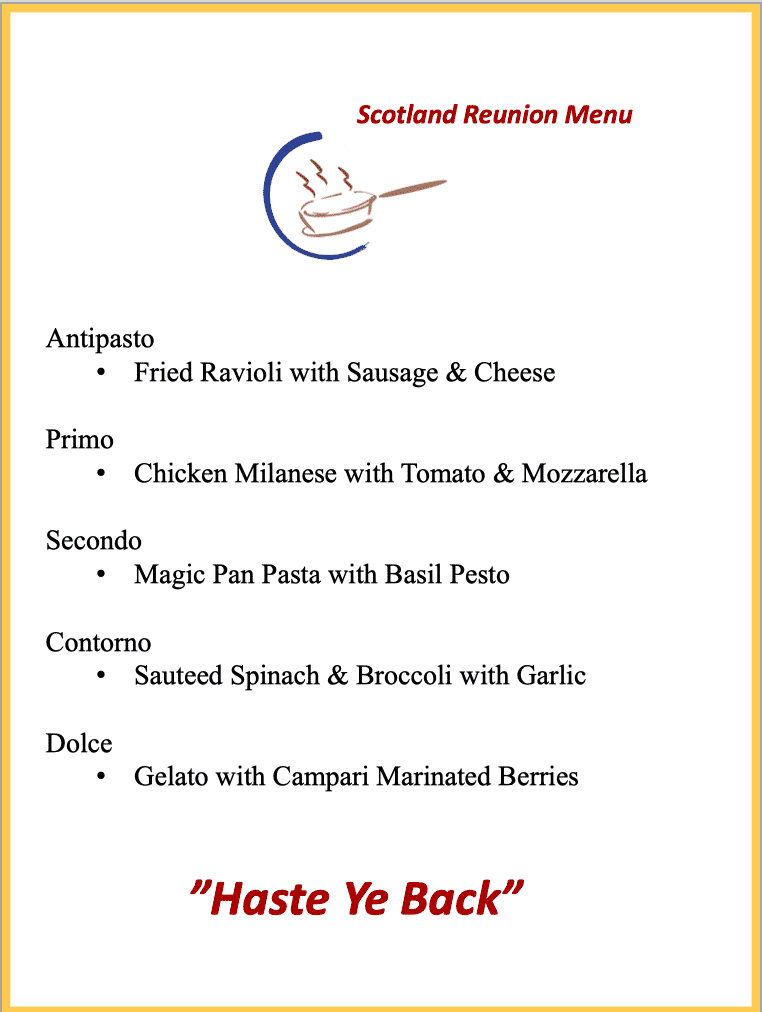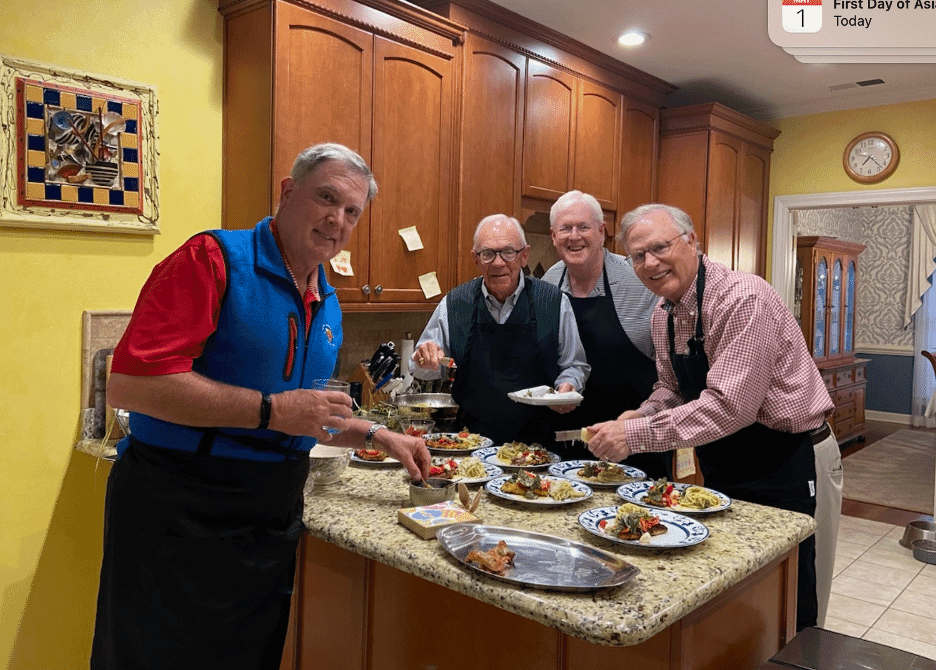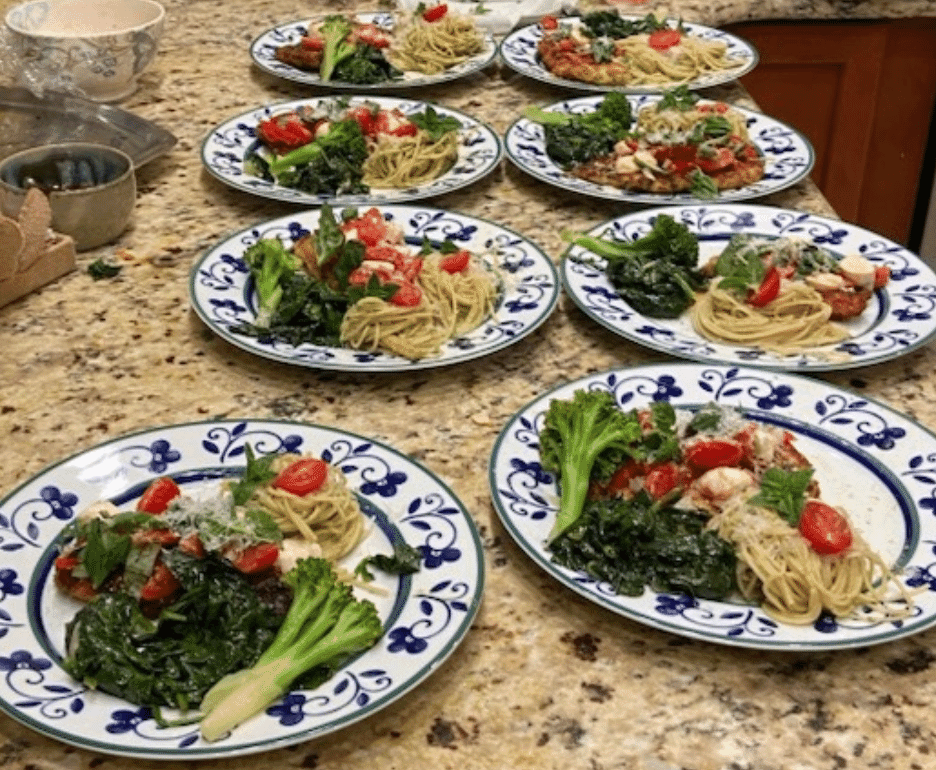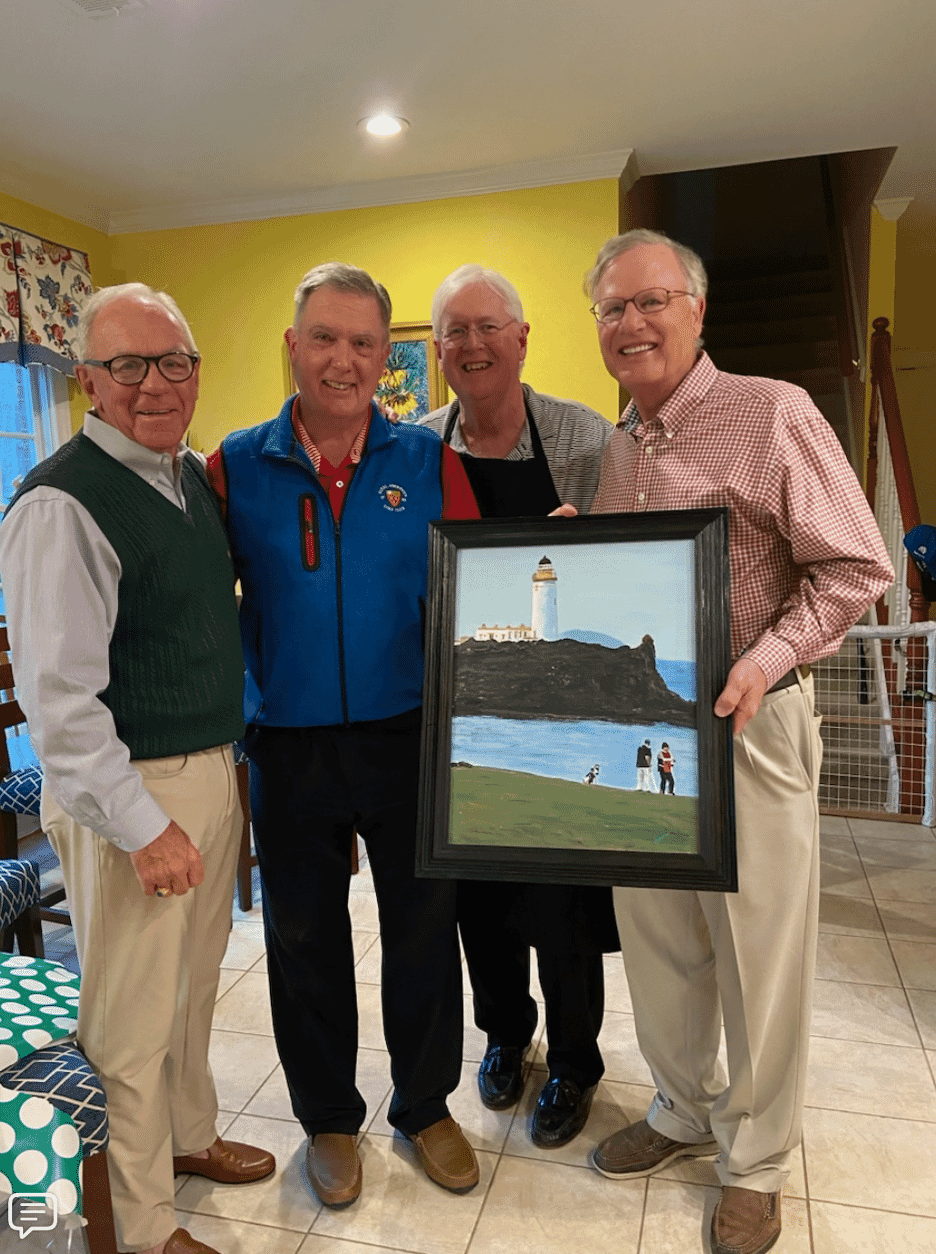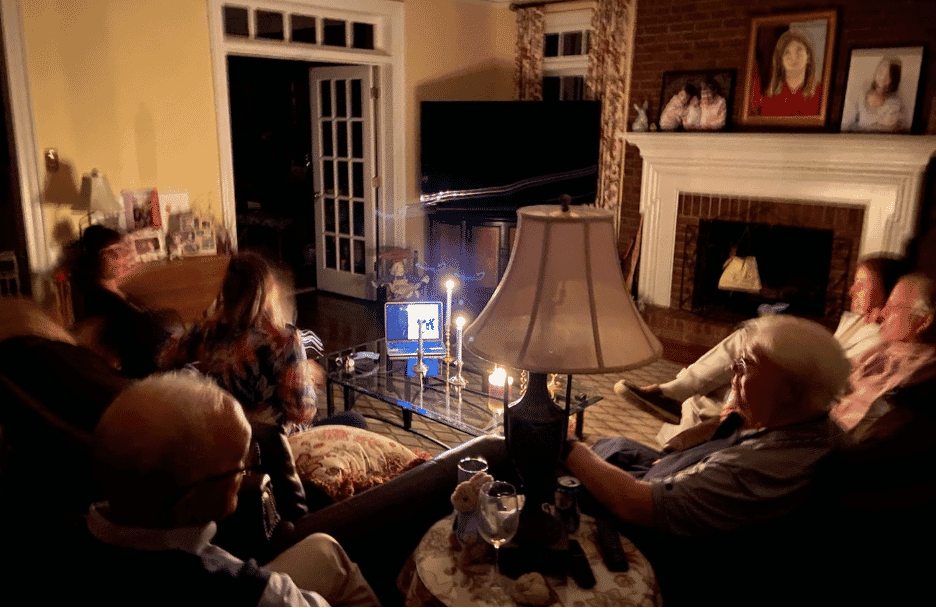My dad (pop-pop to the grandkids) was a college dean but more importantly, student of language:
- He had a doctorate in rhetoric
- “The art of effective or persuasive speaking or writing”.
- He probably didn’t appreciate his son saying “He had a doctorate in BS”.
- He had taught English, Latin and Greek.
- He had learned to speak German when he was in his teens and his older brother was in the monastery in pre-war Germany.
- He took French in high school.
- He went to Italian classes in his 70’s
It is safe to say that dad had a gift for language and some would say, a twisted sense of humor.
A few years ago, on father’s day, my son Brian suggested that we come up with a list of Pop Pop’s lines. A good example of one Dad’s comes back with this memory. Dad would take me to his college and his co-workers would comment that I look like my father and he would say: “We all have across to bear”. Some might say that apples don’t fall far from trees. While I have nowhere near is language and writing skills, I definitely bear the cross of his twisted sense of humor.
As I put this list together, the realization hit me that these lines are multi-generational. One vivid example is the line my father used when he would say
- There are two common spellings of the Kenny name, with and without an “e” between the n and the y. Dad would say: “Never trust an “ey” Kenney because they are probably from the north of Ireland”.
- The problem with this line is that his mother was from the North of Ireland. It is proof that the line passed down from his father who was from Tullamore in central Ireland
- At this point, I am pretty sure, 4 generations have used this line
THE LIST
- At dinner he would randomly ask: Can I ask you a personal question? …Can you pass the salt?
- In reference to his carpentry skills, he would say: “Carpentry, I can do it, but it looks like I did it”
- About his carpentry in general…”Paint covers a lot of sins”
- In refence to a Broadway musical he would say: “You know it is a good musical when people are humming the tunes as they leave the theatre”
- Every time he ate at a Chinese restaurant, he would open his fortune cookie and pretend that it read: “Help I am a prisoner in a Chinese bakery”
- With no reference: He would say things like:
- You hold the baby I’ll shoot the baskets
- You with the sneakers…out of the pool
- Blood and guts all over the floor…I told you the baby wouldn’t bounce.
- Bread bread they cried and the curtains came down with a roll
- On seeing a Lazy Susan on the table, he would say, “Susans’ got a bum rap”
- He would tease the grandkids (and my mother) by saying: “Mom-mom is on the roof in her panties again”
- …He would refer to Parmesan cheese on pasta as” Snow on the roof”
- When introducing mom-mom to a stranger when they were in their 70’s: Let me Introduce you to my first wife
- God only made a certain number of perfect heads, the rest he put hair on.
- The difference between a good haircut and a bad haircut…is about two weeks
- He didn’t curse on the golf course, but he would say: Your mother’s mustache
- About NYC mayor John Lindsey “He is filled with dilutions of adequacy” Quoted in the NYT for John Marchi’s obituary. Marchi was dad’s best friend from the 3rd grade on. John was Conservative Republican state senator in NY for 50 years. Ran for mayor of NYC twice and lost both times to John Lindsey, Dad, a liberal educator, was his speech writer. Go figure…
- About his finance guy at Pace: “He knows the price of everything, and the value of nothing”
- About my two older sisters… He said the first word he taught them was “ELOPE”. And, for their 16th birthday he bought them ladders
- Your mother is the “Brains of the operation”. Mom had the equivalent of 3 master’s degrees. Dad had a doctorate. Mom never got a doctorate
- Under your arms its… “semper agusto” and inside joke with John Marchi
- About dinner: “Not bad considering that you threw it together”
- “We are off like a flock of turtles”
- While he was waiting in the driveway for mother to leave: It won’t be long considering that she still needs to vacuum the kitchen
- About mother ordering a poached egg for breakfast: They can make any egg in 5 minutes except for a poached egg. Order a poached egg and you should expect a half hour wait. They have to research the recipe. they need to find the egg poacher…
- “Langsam Langsam” Pronounced Lahhgsahm or something like that… German for slowly, slowly.
- Here’s one that wasn’t frequent, but I will never forget it: when mother walked out in her long blue and white dress at my wedding Daddy said: “Jesus Christ Dorothy you look like the BVM.”
- Bread, bread, they cried and the curtain came down with a roll
- The cut off the thumb trick
- He used to say this to his granddaughters Jennifer and Katie when they were barely more than toddlers and he would be calling them from his bedroom after knocking on the wall-“Where is she?” In a sort of sing song voice. Katie used to call it the knock knock game. When Pop-Pop died that is what she lamented : “but who will play the knock knock game with us?”
- Whenever he saw a tee shirt saying: PHYS ED…he would say there they go talking about me again
- Never leave a job before you have another
- No matter how bad your job is, at least you are not selling used cars
- On career advice: Dad was an college dean and professor, mom was educator as were many others in the family. When it was time for me to set a direction for my career dad told me: “Kid, everyone in this family is a teacher, but you will do a lot better in business. Trust me, I work with a lot of businessmen, they are not that smart and they make a lot more than teachers”. At the time, dad was the dean of a business school
- He taught me to keep golf score by 5’s. 9 X 5 =45. The good news, to this day I can look at a scorecard in seconds and tell you what you shot. The bad news it takes the focus away from par
- Mercy buttercups instead of merci beaucoup
- “Tower of Jell-O” In reference to my ability to handle pressure on the golf course, long before I worked for Kraft
- Actors have it made. They are never out of work. Never unemployed. They are between engagements. It sounds good
- Paul’s nickname Lu. Short for Luap or Paul spelled backwards
- On the golf course we would be waiting for the group in front of us to get out of the way and dad would say: “You might hit them, but you won’t bruise them that too bad”.
- Referring to how I cope with pressure on the golf course he would say: “Don’t worry, he folds like a cheap suit”
- Referring to certain of his least favorite corporations, he would say: “They are like Barney’s men’s store, they have 6 floors of empty suits”
- Dad would refer to mom as the “War Department”. As in: Do you want to go out to dinner: “Don’t ask me you better talk to the WAR DEPARTMENT”.
- He is a good kid he brings home everything he steals
- He would say that mother would intentionally serve dinner late because when she did serve it people were so hungry that “Even the wallpaper would taste good”
- House on dune road look like they were designed by Frank Loyd WRONG.
Happy Father’s Day Dad!
If you enjoyed this blog and similar other stories/wine group/supper club lessons follow me on Facebook and Twitter and subscribe to get future blogs at www.impromptufridaynights.com/blog and check out my book Impromptu Friday Nights a Guide to Supper Clubs. Published by Morgan James Publishing and available through most channels where books are sold.

